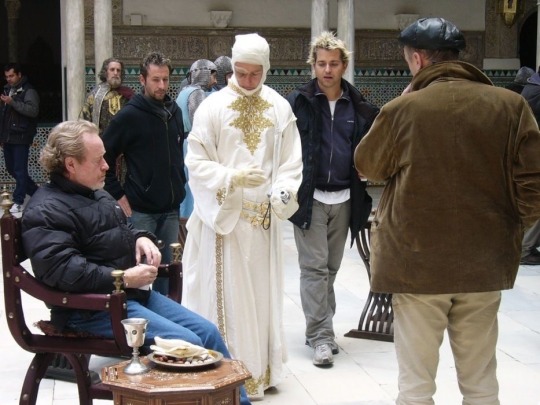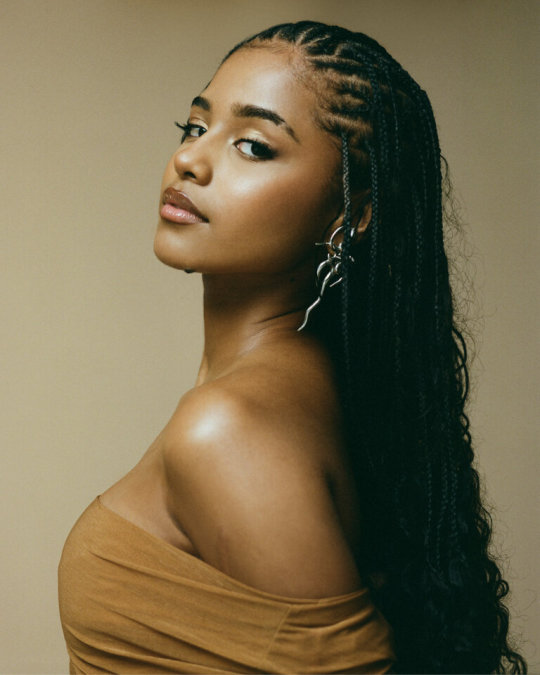Text
Who might they be?

My guess:
1. Raymond IV of Tripoli, Tiberias's successor, son of Bohemond III of Antioch
2. Bohemond IV of Antioch (1175-1233), brother of Raymond IV of Tripoli
3. John of Ibelin (1179-1236), son of Maria Komnene and Balian
4. Margaret of Ibelin (est.1179-1240), daughter of Maria Komnene and Balian
5. Maria Komnene
6. Eschiva of Bures, Tiberias's wife
7. Stephanie of Milly, wife of Raynald of Chatillon
8. William of Montferrat (1115-1191), Baldwin V's paternal grandfather
9. Bohemond III of Antioch (c.1148-1201), stepson of Raynald of Chatillon
10. Aimery of Lusignan (bef.1155-1205), Guy's older brother
11. Reginald of Sidon (1130-1202), the last husband of Agnes of Courtenay
20 notes
·
View notes
Text
''Kingdom of Heaven'' but it's a calendar's pics



Wait for the update...
34 notes
·
View notes
Text
first time editing on after effects so leper pookie is my guinea pig (idk why the audio rendered weirdly help)
54 notes
·
View notes
Text




Tiberias being an emotional support for the traumatized royal siblings
125 notes
·
View notes
Text
[[There's no more time left for me sibylla...]]
Watch this till I cook something new🤌🏻🗿...
83 notes
·
View notes
Text
Day one of creating KoH stickers for the stickerpack✅
(I'm posting two pictures since I forgot to post the first Baldwin sticker yesterday. And yes, he's without leprosy - I forgot about that, ahhh)


More stickers will appear in my reblogs, don't miss out😉
132 notes
·
View notes
Text


These photos are excellent. Ed Norton in maskless Baldwin outfit with a tea/coffee cup and plate AND a camera? Check. (Ed??? Did u take any photos⁉️ SHOW US) Ridley Scott also enjoying a sip in the throne chair? Check. Most 2000s looking guy? Check.
(Sorry if the guy is someone known, I don’t recognize him lol)
101 notes
·
View notes
Text
Why is nobody talking about this?😳
(It's him breathless for those who don't understand)
"Do we have terms?😐 ahh😮💨" ahh reaction😭🙏💘
311 notes
·
View notes
Note
Hello I have a bit of a weird question here , well , do you think modern women or modern women we consider beautiful in our time now would be considered beautiful in the medieval times ? Let’s say conventionally attractive women of this time such as Tyla , Madison beer , Sabrina carpenter , women we agree all that they are beautiful, do you think they would be this appreciated in let’s say medieval Europe or the crusader kingdoms ? Thank you very much for reading and answering 💗
Hello, anon! Sorry for the extremely late reply 🙈
Ngl, I had to google these people because I had no idea who they are. So in case any of my readers are like me and lack a basic understanding of recent pop culture, here they are for reference:



All in all, medieval ideas of beauty were actually not very different from our present ones. Looking at descriptions of beautiful women in medieval European literature, we see that, in general, writers prized features that are symmetrical and signal youth and health - which also pretty much sums up our 21st-century understanding of feminine beauty. So it is likely that those we as a society consider beautiful would have elicited a similar reaction from Baldwin and his contemporaries. (Though I imagine they would have had a word or five to say about the future's skimpy clothing, and not only for reasons of modesty. Like, where are the swathes and swathes of luxurious fabric? Are we too poor to afford it?)
Of course, medieval and modern ideals differ in some particulars. As you asked specifically about medieval Europe and since the crusader kingdoms largely followed the customs & culture of the French court: Yes - to get the obvious out of the way - there was an emphasis on the whiteness of a woman's skin at the time. Which is here not only an issue of race (a whole 'nother can of worms to open) but also of class, as lighter skin would have been regarded as a signifier that the woman was (or looked like) a member of the nobility, who did not have to do physical labour in the fields etc. where the sun would have been beating down on her all day.
That said, there are examples of dark-skinned characters in medieval European texts who are described as beautiful, such as Queen Belacane in the early-13th-century German chivalric romance Parzival. However, I would be denying history if I didn't acknowledge that even these characters, sometimes subtly, sometimes considerably less so, tend to be presented as an Other. In Wolfram's Parzival, for example, Belacane's people are "liute vinster sô diu naht" ("people dark as the night", Parzival 17,24). She is thus deliberately constructed as the opposite of the European ideal of the courtly lady (Mieger 191), who tends to be described as things like "liehters denne der tac" and "touwegen rôsen" ("lighter than the day" and like a "dewy rose", Parzival 24,6 and 24,10).
I haven't found any specific research materials on beauty standards in the crusader states, but I'd imagine this might have been less of an issue there than in the more remote parts of Europe, given that the cultural melting pot of the Levant would have exposed its inhabitants on a daily basis to different ideas and ideals of beauty. First and foremost, in any case, would have come considerations of religion - a beautiful "heathen" would have had to be very appealing and otherwise virtuous indeed for a European writer to apply courtly adjectives to her, whereas a Christian woman, no matter the colour of her skin, would have been regarded a little more favourably (though again likely exoticised as an Other if she wasn't white).
What did European courtly culture consider appealing then, other than ominous "dewy roses"? As far as text sources go, medieval society liked women to have a slender figure, healthy but not too thin, with a small but full mouth, a well-formed, not too prominent nose, rather small feet and hands, a long elegant neck, and white and even teeth. Mathieu de Vendôme’s Ars versificatoria (late-twelfth century) uses the example of Helen of Troy as the epitome of beauty. His Helen has golden and free-flowing hair, a “Milky Way-white” forehead, black and separated eyebrows “like arches”, sparkling eyes “like stars”, rosy cheeks, a straight nose which is neither too flat or too large, rosy and delicate lips, straight teeth that are “whiter than ivory”, and firm, small breasts (da Soller 98).
Another interesting example is offered in a thirteenth-century Castilian translation of an Arabic folk story, La historia de la doncella Teodor: “the beautiful woman has eighteen signs: three long, three short, three small, three white, three black, and three red. three long: torso, neck, and fingers; three white: body, teeth, and white of the eyes; three black: hair, eyes, and eyebrows; three red: cheeks, lips, and gums; three small: mouth, nose, and feet; three wide: hips, shoulders, and forehead” (101).
So, going back to the three women you mentioned, I'd say they fit the medieval ideal pretty well. Though we prefer somewhat more prominent curves and probably slightly more striking facial features nowadays than our ancestors (as well as fortunately moving away from prizing only light skin), I think we do see here that the difference between medieval and modern isn't actually that large. There's still an undercurrent of kalokagathia in our society's thinking, i.e. the idea that outward beauty signals inner virtue (think, for instance, of the fact that our fictional villains tend to be conventionally unattractive as opposed to the usually attractive good guys).
All things considered though, I shall end this rambling lecture by saying that, ultimately, tastes differ, today as well as in the Middle Ages. It is understandable that you might wish to appeal to, say, your favourite medieval king, but after expounding at length on what's supposedly beautiful or not, let me remind you: As people (and especially women), we do not exist to be ogled and judged by others - you are valuable regardless of whether a particular person considers you beautiful or not. 💛
Sources:
da Soller, Claudio. "Beauty, Evolution, and Medieval Literature." Philosophy and Literature, vol. 34, 2010, pp. 95–111.
Mieger, Hannah. "Königin of Color – Belacane in Wolframs von Eschenbach Parzival als intersektionale Figur." Intersektionalität und erzählte Welten: literaturwissenschaftliche und literaturdidaktische Perspektiven, edited by Verónica Abrego, Ina Henke, Magdalena Kißling, Christina Lammer, Maria-Theresia Leuker, 2023, pp. 187-201.
37 notes
·
View notes















